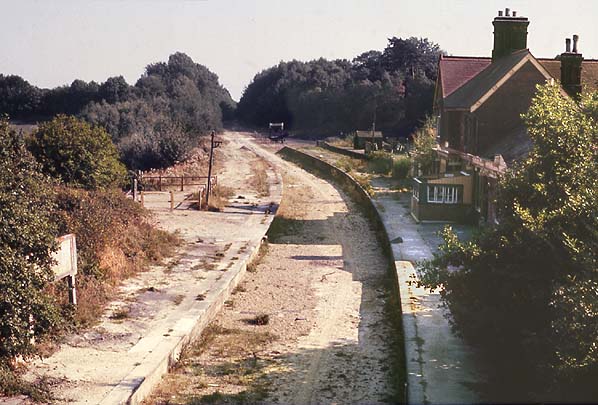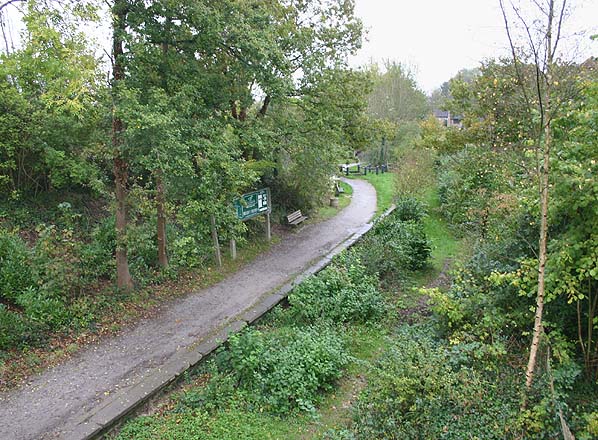|
 Notes: The station was originally called Horeham Road although
it was also known as Horeham Road for Waldron. It served Waldron,
2'/z miles away and nearby Horeham Manor. On 1.4.1900 it was
renamed Waldron & Horeham Road. With the coming of the railway
and the Express Dairy depot a hamlet gradually grew up around
the station, this was initially known as Horeham but some time
in the 1930's the name was changed to Horam and to reflect this
change the station was once again renamed Waldron & Horam
on 1.1.1935. There was a final name change on 21.9.1953 when
the station was renamed Horam. Notes: The station was originally called Horeham Road although
it was also known as Horeham Road for Waldron. It served Waldron,
2'/z miles away and nearby Horeham Manor. On 1.4.1900 it was
renamed Waldron & Horeham Road. With the coming of the railway
and the Express Dairy depot a hamlet gradually grew up around
the station, this was initially known as Horeham but some time
in the 1930's the name was changed to Horam and to reflect this
change the station was once again renamed Waldron & Horam
on 1.1.1935. There was a final name change on 21.9.1953 when
the station was renamed Horam.
Horam was the main depot for Express Dairies, and the main
goods traffic on the line came from the Depot. Goods facilities
were withdrawn from Horam on 6.5.1963
BRIEF HISTORY OF EASTBOURNE
- TUNBRIDGE WELLS (CUCKOO) LINE
The `Cuckoo Line' from Polegate to Eridge was completed in two
stages. Initially a route from Polegate to Hailsham was opened
on 14th May 1849 and a line south to Eastbourne opened to traffic
on the same day. These lines followed only three years after
a route had been completed east from Brighton via Lewes and
Polegate to St. Leonards.
 The remainder of the route northwards from Hailsham to Eridge
was completed some 31 years. In 1873, local business interests
promoted a Bill for a 3' gauge line from Tunbridge Wells to
Polegate. Little progress was made in raising the required capital
and the LBSC stepped in, obtaining an Act in 1876 giving them
authority to extend their Hailsham line to Eridge where it joined
the Uckfield - Groombridge Junction line (opened in 1868). The
South Eastern Railway was to be given a share in the receipts
and running powers over the line into Eastbourne. The remainder of the route northwards from Hailsham to Eridge
was completed some 31 years. In 1873, local business interests
promoted a Bill for a 3' gauge line from Tunbridge Wells to
Polegate. Little progress was made in raising the required capital
and the LBSC stepped in, obtaining an Act in 1876 giving them
authority to extend their Hailsham line to Eridge where it joined
the Uckfield - Groombridge Junction line (opened in 1868). The
South Eastern Railway was to be given a share in the receipts
and running powers over the line into Eastbourne.
The 7 1/2 miles of single track was opened between Hailsham
and Heathfield on 5th April 1880 and the 9 3/4 miles on to Eridge
on 1st September that year.
 At Redgate Junction, south of Eridge it joined the route from
Uckfield to Groombridge and both lines ran in parallel to Tunbridge
Wells and to London via the Oxted line. When the Uckfield line
was doubled in 1894 the Heathfield line north of Redgate Junction
became the down line. The name `Cuckoo' was adopted by the railwaymen themselves.
This relates to the old Sussex legend that on the 14th April
annually the first cuckoo of summer is released at Heathfield
Fair. At Redgate Junction, south of Eridge it joined the route from
Uckfield to Groombridge and both lines ran in parallel to Tunbridge
Wells and to London via the Oxted line. When the Uckfield line
was doubled in 1894 the Heathfield line north of Redgate Junction
became the down line. The name `Cuckoo' was adopted by the railwaymen themselves.
This relates to the old Sussex legend that on the 14th April
annually the first cuckoo of summer is released at Heathfield
Fair.
By 1904 services on the Brighton lines had
assumed a pattern that was to remain radically unaltered
until 1933. There were a total of 83 workings between Groombridge
and Tunbridge Wells West where trains went on to three destinations,
Three Bridges, Brighton via the Uckfield line and Eastbourne
via the Cuckoo line.
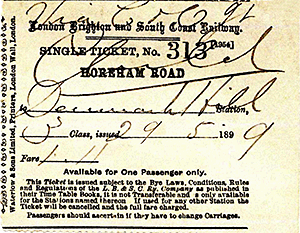 By 1925 the single track spur from Tunbridge Wells West to
Central was little used with four daily trains to Brighton and
two to Uckfield. Three of these carried through carriages for
the Cuckoo line which were detached at Eridge. By the 1950's
this had improved and in 1956, 58 passenger trains and two freights
used the spur making it, for that year, the busiest section
of single track in the country. The main goods stations on the Cuckoo line were at Heathfield
and Hailsham, the other stations handled little more than the
occasional wagon of coal. By 1925 the single track spur from Tunbridge Wells West to
Central was little used with four daily trains to Brighton and
two to Uckfield. Three of these carried through carriages for
the Cuckoo line which were detached at Eridge. By the 1950's
this had improved and in 1956, 58 passenger trains and two freights
used the spur making it, for that year, the busiest section
of single track in the country. The main goods stations on the Cuckoo line were at Heathfield
and Hailsham, the other stations handled little more than the
occasional wagon of coal.
Despite a new timetable being introduced in the 1950's with
one train an hour on the Cuckoo line, it was not to survive
the Beeching cuts. In 1965 a survey revealed that there were
only 250 passengers a day using the line of which only 23 were
season ticket holders. Any attempt to promote the line was halted
under the Beeching plan and a new timetable was introduced with
long waits between connecting trains designed to deter passengers
from using the service.
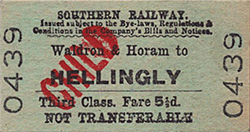 The Cuckoo line was closed to passengers north of Hailsham on
14th June 1965. Freight The Cuckoo line was closed to passengers north of Hailsham on
14th June 1965. Freight
trains continued from Hailsham to Heathfield until 26th April
1968 when a bridge became damaged and repair was considered
uneconomic and not carried out. Hailsham closed completely on
9th September 1968 and with this the final stretch of Cuckoo
line had gone.
Although the line between Groombridge and Tunbridge Wells West
was also proposed for closure this remained open but there was
no future investment in the line and by the early 1980's the
track and signaling needed replacing. With the planned removal
of Grove Junction during the upgrade of the Tonbridge - Hastings
line British Rail decided they could no longer justify keeping
the line open and announced closure of the line from 16th May
1983. Once again there were strong objections but these were
outweighed by British Rail's cost argument. They estimated that
to upgrade the infrastructure, while retaining the existing
services, would give a £175,000 loss per year and the
Secretary of State confirmed closure of the line on 6th July
1985.
Grove Junction was removed the day after closure but the line
from Eridge to Tunbridge Wells remained in use until 10th August
1985 when the depot was closed.
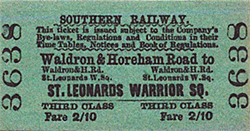 Shortly after closure the Tunbridge Wells and Eridge Railway
Preservation Society was formed with an aim of reinstating the
passenger service on the line. The Society acquired the line
in the early 1990's and by winter 1996 they had refurbished
half a mile of track and were able to run a steam service from
their base on part of the old Tunbridge Wells West station site.
TWERPS later merged with the North Downs Steam Railway at Dartford,
Kent. The line is now known as The
Spa Valley Railways, a name chosen as the result of a competition. Shortly after closure the Tunbridge Wells and Eridge Railway
Preservation Society was formed with an aim of reinstating the
passenger service on the line. The Society acquired the line
in the early 1990's and by winter 1996 they had refurbished
half a mile of track and were able to run a steam service from
their base on part of the old Tunbridge Wells West station site.
TWERPS later merged with the North Downs Steam Railway at Dartford,
Kent. The line is now known as The
Spa Valley Railways, a name chosen as the result of a competition.
The Spa Valley
Railway now runs for 3 1/2 miles to a new station at Groombridge
with an intermediate station at High Rocks built by the owner
of the High Rocks Inn and Restaurant.
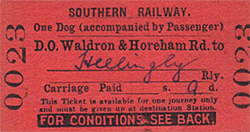 Between 1992 - 1994 the section of line between Polegate and
Heathfield was reopened by the county council as a footpath
and cycleway known as the Cuckoo
Trail. There are proposals to extend northwards from Heathfield
and as part of this extension Heathfield Tunnel has been restored
and lit and the 'Millennium Gates' fitted to the south portal. Between 1992 - 1994 the section of line between Polegate and
Heathfield was reopened by the county council as a footpath
and cycleway known as the Cuckoo
Trail. There are proposals to extend northwards from Heathfield
and as part of this extension Heathfield Tunnel has been restored
and lit and the 'Millennium Gates' fitted to the south portal.
Tickets from Michael Stewart
To see the other
stations on the Eastbourne - Tunbridge Wells West line click
on the station name: Tunbridge
Wells West, High
Rocks Halt, Groombridge,
Eridge, Rotherfield
& Mark Cross, Mayfield,
Heathfield, Hellingly,
Hailsham, Polegate,
Hampden Park
& Eastbourne
|

1.jpg)
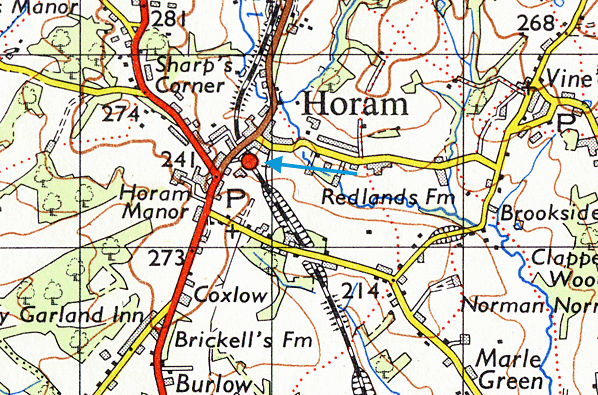
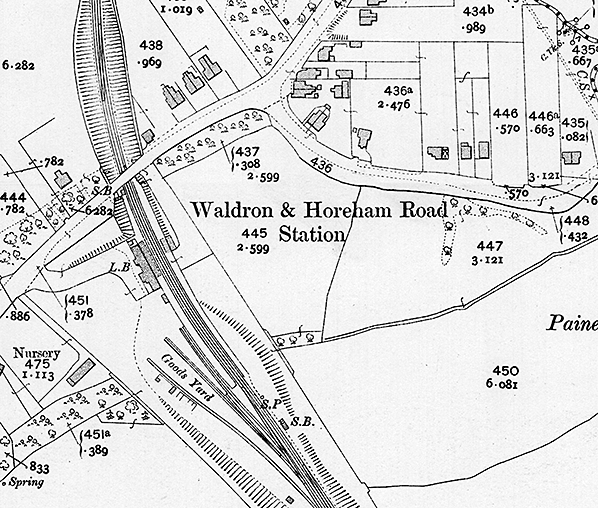
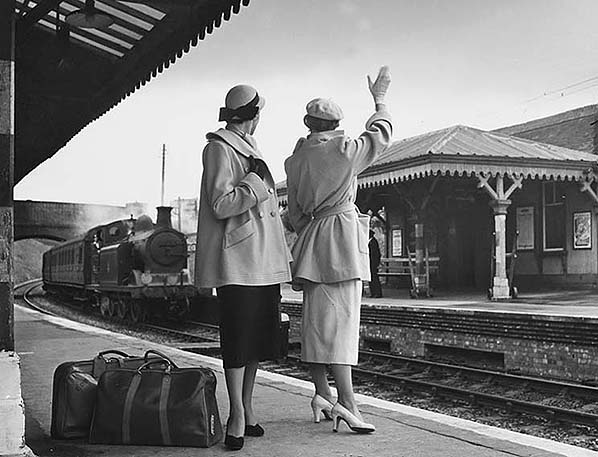
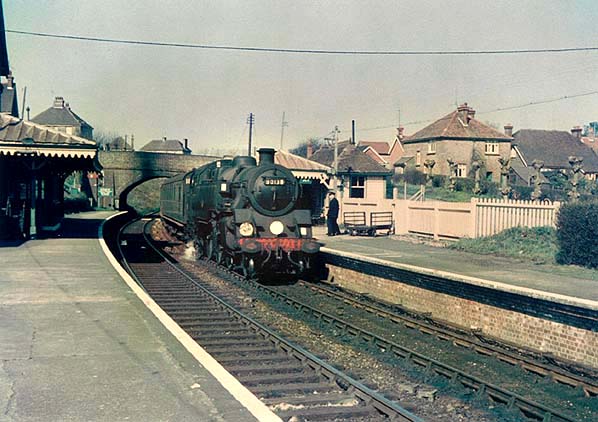
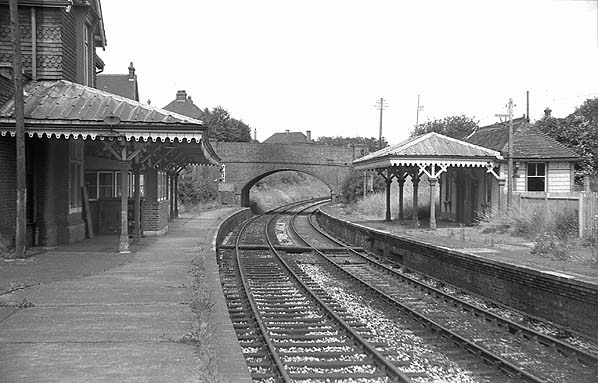
 Home
Page
Home
Page
 Notes: The station was originally called Horeham Road although
it was also known as Horeham Road for Waldron. It served Waldron,
2'/z miles away and nearby Horeham Manor. On 1.4.1900 it was
renamed Waldron & Horeham Road. With the coming of the railway
and the Express Dairy depot a hamlet gradually grew up around
the station, this was initially known as Horeham but some time
in the 1930's the name was changed to Horam and to reflect this
change the station was once again renamed Waldron & Horam
on 1.1.1935. There was a final name change on 21.9.1953 when
the station was renamed Horam.
Notes: The station was originally called Horeham Road although
it was also known as Horeham Road for Waldron. It served Waldron,
2'/z miles away and nearby Horeham Manor. On 1.4.1900 it was
renamed Waldron & Horeham Road. With the coming of the railway
and the Express Dairy depot a hamlet gradually grew up around
the station, this was initially known as Horeham but some time
in the 1930's the name was changed to Horam and to reflect this
change the station was once again renamed Waldron & Horam
on 1.1.1935. There was a final name change on 21.9.1953 when
the station was renamed Horam. The remainder of the route northwards from Hailsham to Eridge
was completed some 31 years. In 1873, local business interests
promoted a Bill for a 3' gauge line from Tunbridge Wells to
Polegate. Little progress was made in raising the required capital
and the LBSC stepped in, obtaining an Act in 1876 giving them
authority to extend their Hailsham line to Eridge where it joined
the Uckfield - Groombridge Junction line (opened in 1868). The
South Eastern Railway was to be given a share in the receipts
and running powers over the line into Eastbourne.
The remainder of the route northwards from Hailsham to Eridge
was completed some 31 years. In 1873, local business interests
promoted a Bill for a 3' gauge line from Tunbridge Wells to
Polegate. Little progress was made in raising the required capital
and the LBSC stepped in, obtaining an Act in 1876 giving them
authority to extend their Hailsham line to Eridge where it joined
the Uckfield - Groombridge Junction line (opened in 1868). The
South Eastern Railway was to be given a share in the receipts
and running powers over the line into Eastbourne. At Redgate Junction, south of Eridge it joined the route from
Uckfield to Groombridge and both lines ran in parallel to Tunbridge
Wells and to London via the Oxted line. When the Uckfield line
was doubled in 1894 the Heathfield line north of Redgate Junction
became the down line. The name `Cuckoo' was adopted by the railwaymen themselves.
This relates to the old Sussex legend that on the 14th April
annually the first cuckoo of summer is released at Heathfield
Fair.
At Redgate Junction, south of Eridge it joined the route from
Uckfield to Groombridge and both lines ran in parallel to Tunbridge
Wells and to London via the Oxted line. When the Uckfield line
was doubled in 1894 the Heathfield line north of Redgate Junction
became the down line. The name `Cuckoo' was adopted by the railwaymen themselves.
This relates to the old Sussex legend that on the 14th April
annually the first cuckoo of summer is released at Heathfield
Fair. By 1925 the single track spur from Tunbridge Wells West to
Central was little used with four daily trains to Brighton and
two to Uckfield. Three of these carried through carriages for
the Cuckoo line which were detached at Eridge. By the 1950's
this had improved and in 1956, 58 passenger trains and two freights
used the spur making it, for that year, the busiest section
of single track in the country. The main goods stations on the Cuckoo line were at Heathfield
and Hailsham, the other stations handled little more than the
occasional wagon of coal.
By 1925 the single track spur from Tunbridge Wells West to
Central was little used with four daily trains to Brighton and
two to Uckfield. Three of these carried through carriages for
the Cuckoo line which were detached at Eridge. By the 1950's
this had improved and in 1956, 58 passenger trains and two freights
used the spur making it, for that year, the busiest section
of single track in the country. The main goods stations on the Cuckoo line were at Heathfield
and Hailsham, the other stations handled little more than the
occasional wagon of coal. The Cuckoo line was closed to passengers north of Hailsham on
14th June 1965. Freight
The Cuckoo line was closed to passengers north of Hailsham on
14th June 1965. Freight  Shortly after closure the Tunbridge Wells and Eridge Railway
Preservation Society was formed with an aim of reinstating the
passenger service on the line. The Society acquired the line
in the early 1990's and by winter 1996 they had refurbished
half a mile of track and were able to run a steam service from
their base on part of the old Tunbridge Wells West station site.
TWERPS later merged with the North Downs Steam Railway at Dartford,
Kent. The line is now known as
Shortly after closure the Tunbridge Wells and Eridge Railway
Preservation Society was formed with an aim of reinstating the
passenger service on the line. The Society acquired the line
in the early 1990's and by winter 1996 they had refurbished
half a mile of track and were able to run a steam service from
their base on part of the old Tunbridge Wells West station site.
TWERPS later merged with the North Downs Steam Railway at Dartford,
Kent. The line is now known as  Between 1992 - 1994 the section of line between Polegate and
Heathfield was reopened by the county council as a footpath
and cycleway known as the
Between 1992 - 1994 the section of line between Polegate and
Heathfield was reopened by the county council as a footpath
and cycleway known as the 
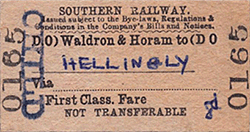
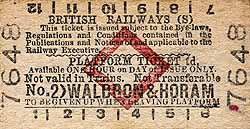
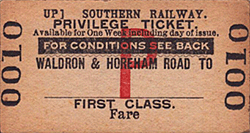
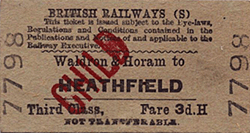
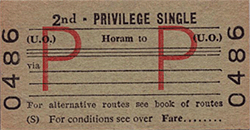
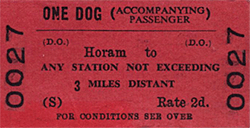
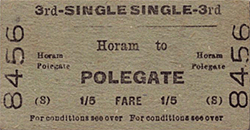
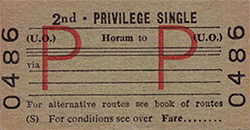
_old2.jpg)
